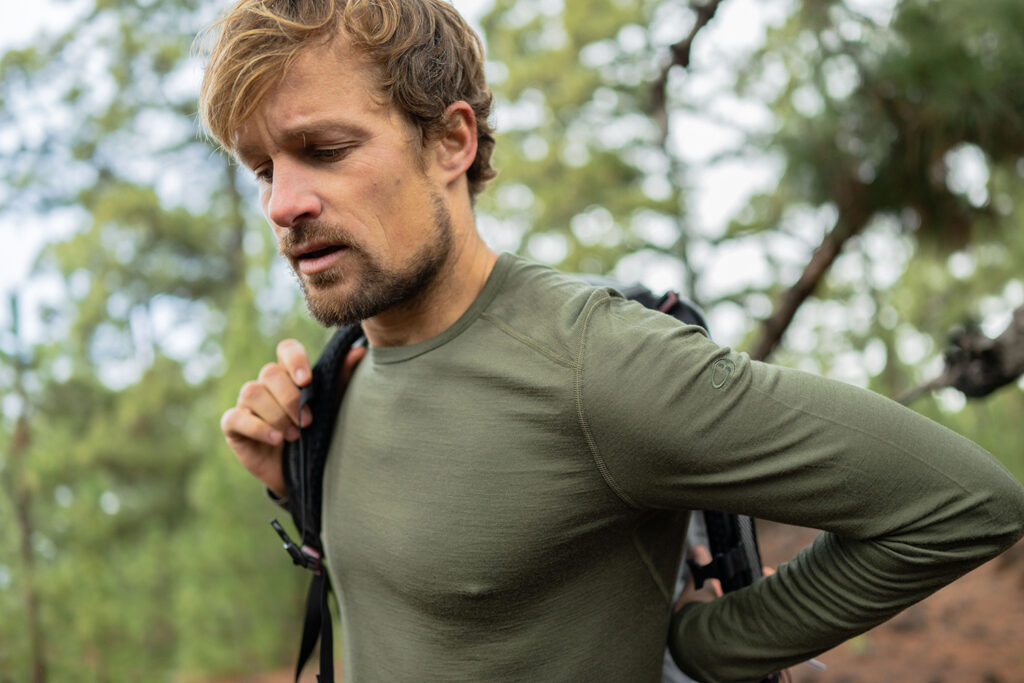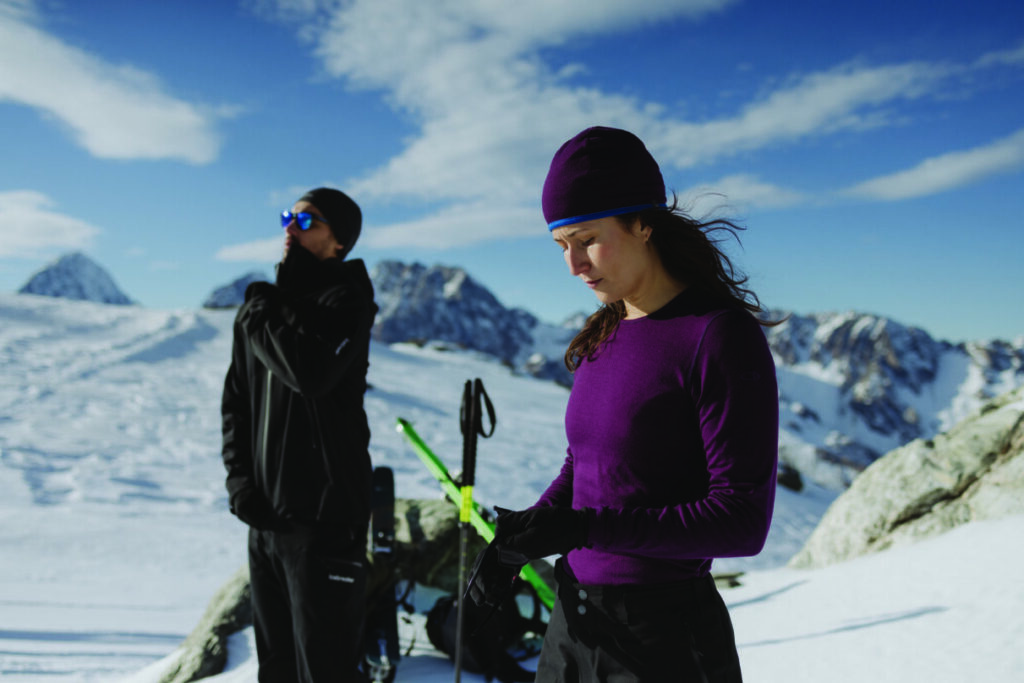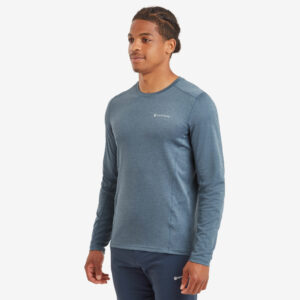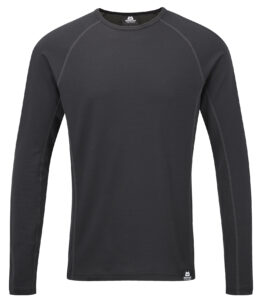
Baselayers: Your First Line of Defence Against Sweat
Which baselayer should you choose for your outdoor adventures? If you’ve ever been on a walk and found yourself drenched in sweat, you know the importance of having the right gear. That sweat has to go somewhere, and with ‘regular’ clothing. It simply gets absorbed by the primitive fabrics and sits against your skin for the duration of your activity. This is where baselayers come in. Acting as the first line of defence, baselayers move moisture away from your skin and push it to the exterior of the garment to evaporate. It keeps you dry and comfortable and this is generally referred to as ‘wicking’. There are lots of different types of baselayers. What we’re going to talk about today are the three main types of fabrics and the pros and cons of each.
Which baselayer should you choose? Types of baselayer fabrics
When it comes to choosing a baselayer, there are three main types of fabrics to consider: synthetic, merino wool, and synthetic/merino wool blends.
Let’s dive in and explore what each of these fabrics can offer. By understanding the unique properties and benefits of them, you can make an informed decision about which baselayer should you choose for your outdoor activities.
Merino Wool baselayer

High quality merino wool dispels all the myths about wool being itchy. It’s incredibly comfortable next to skin thanks to the ultra-fine fibres and feels a lot like cotton, just nicer. The beauty of merino wool is that it has the natural ability to inhibit the build-up of odour. This means you can wear merino wool baselayers for days on end and they won’t smell. It also makes them brilliant for multi-day trekking and walking. It also does a fantastic job of regulating your temperature . The warmer you get, the more warmth is released to prevent overheating. Conversely, it will keep you warm during colder activities; much like it would on the merino sheep in Kiwi winters. They’re available in a range of different weights, thicknesses and designs, allowing you to choose the one that suits you best.
The downside to merino wool is that the natural fibres aren’t quite as durable as synthetic fibres. Also, due to its premium quality (most merino comes from New Zealand). Merino wool does come in at the higher end of the price bracket. However, it’s not a huge difference if you consider that you only need one layer for a multi-day trip rather than two or three. They can also last a decade or more with some care.
Choosing a Merino Wool Baselayer: Weighing the Pros and Cons
Pros:- Non-itchy
- Odour-resistant
- Comfortable
- Moisture-wicking
- Temperature regulating
Cons:
- Long drying times
- Less durable than synthetic
- Expensive
Synthetic Fabrics base layers

Synthetic fabrics thrive during aerobic activities where you’re sweating heavily. The big advantages of synthetic fibres are that they wick sweat away exceptionally quickly and they dry far quicker than merino wool fibres. Like merino, they’re available in a wide range of weights to suit different seasons. They are super lightweight, loosely-fitting ones for spring/summer use and thick, snug-fitting ones for autumn/winter. Another big plus is that they’re easy to wash and dry quickly. Just bung in the wash at 30°C with some Grangers Active Wash and they’re good to go.
There are a few downsides, though. Synthetic fibres don’t have the same odour-controlling properties that merino wool has. This means that you’ll probably need two or three layers if you’re off for a multi-day trip (unless you’re happy offending your campmates). Some manufacturers are working odour-controlling technologies, like polygiene, into their garments, but even so, the nature of the fabric means that they can still get a bit pongy and will need washing more regularly. They’re also essentially made of plastic. Polyester is a form of plastic derived from petroleum. It isn’t as sustainable as a merino wool alternative which is simply sheered during warmer months when it’s no longer required. Many manufacturers are now using recycled polyester to limit the effects of this.
Pros:
- Comfortable
- Rapid moisture wicking
- Quick drying
- Easy to wash
- Cheaper then merino wool
- More durable than merino wool
Cons:
- Gets stinky quickly
- Requires more washing
- Essentially made of plastic
Synthetic & Merino Blend

Synthetic and merino wool blend garments are a combination of the two and share many benefits from both sides. The merino wool fibres are mixed with the synthetic fibres so you get the benefits of both. Durability, quick drying, high wicking properties of the synthetic fibres teamed with the comfort, softness, odour control and the consistent temperature regulation of merino wool. They still wash very easily in most cases.
They’re a little ‘jack of all trades but master of none’. If you prefer to move slower for longer, merino is unbeatable. If you’re moving quickly in the mountains and need absolute moisture-wicking, synthetic is the one to go for. Blended fabrics are good at both, but not as good as both. There are also more options available in either a pure merino wool garment or a pure synthetic garment. The fabric blend is also harder to make meaning the garments are usually more expensive than 100% synthetic or merino wool products.
Pros:
- Combines the benefit of both fabrics
- Good odour control
- Durable
- Soft
- Comfortable
Cons:
- More expensive than Merino and Synthetic garments
- Jack of all trades, master of none
- Fewer options available
Which baselayer should you choose? Summary
Choosing the right baselayer can make all the difference in your outdoor adventures. In the blog “Which Baselayer Should You Choose?”, we explored the three main types of baselayer fabrics and their pros and cons.
We stock a massive range of short sleeve, long sleeve, synthetic, merino, blended, zipped and non-zipped baselayers from various brands — you can have a peruse here. If you’re still confused, contact our helpful customer service team.

Leave a Reply